RCA students design wearable dwelling for Syrian refugees
A group of students from London's Royal College of Art have designed a prototype coat for refugees that transforms into a tent or a sleeping bag (+ movie).
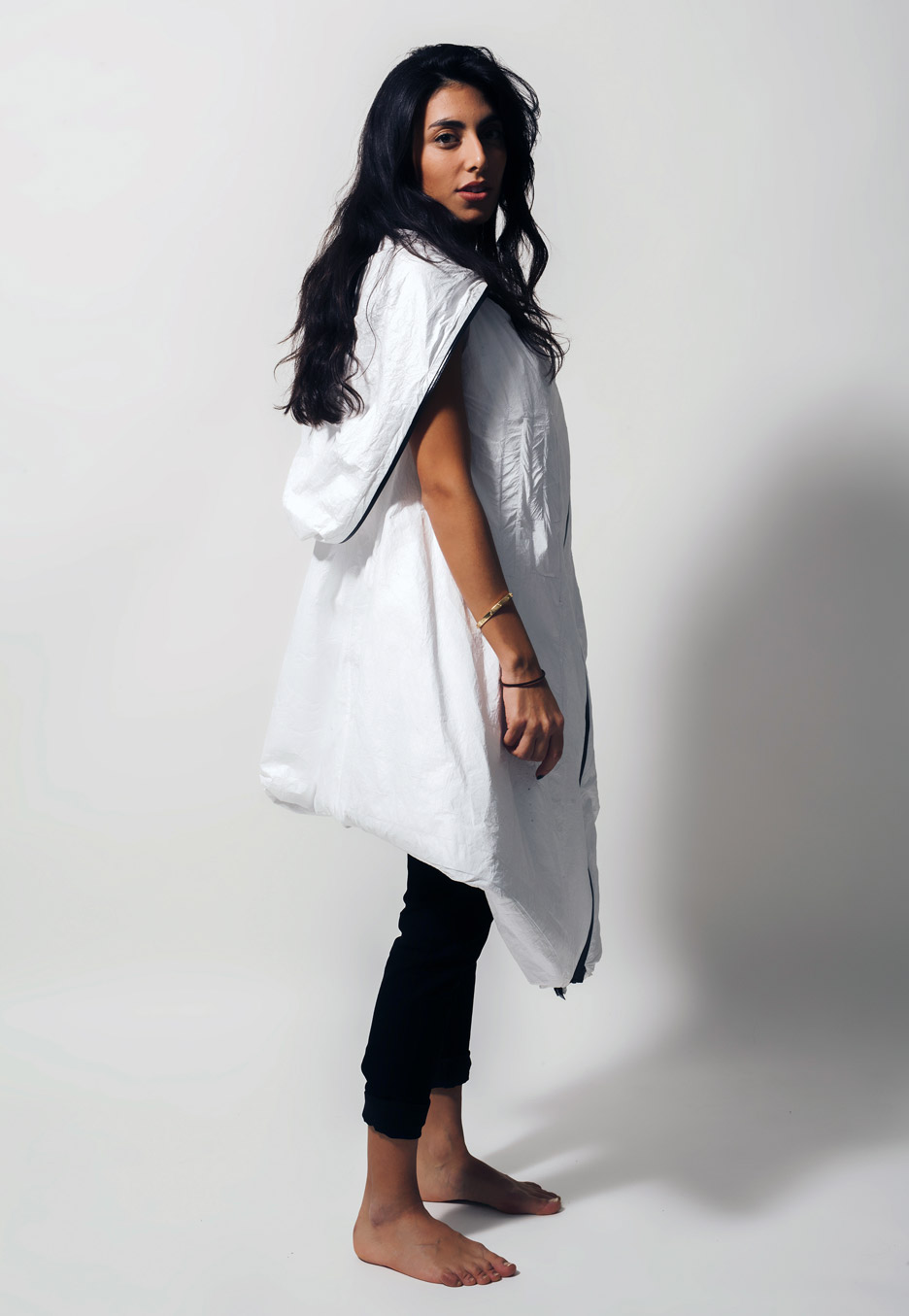
Made from paper-like synthetic material Tyvek, the Wearable Habitation coat is insulated with Mylar – a polyester material commonly used by marathon runners to keep warm.
When worn as a coat, the design resembles a baggy parka with a large hood. Pockets on the inside can be used to store passports and personal documents.
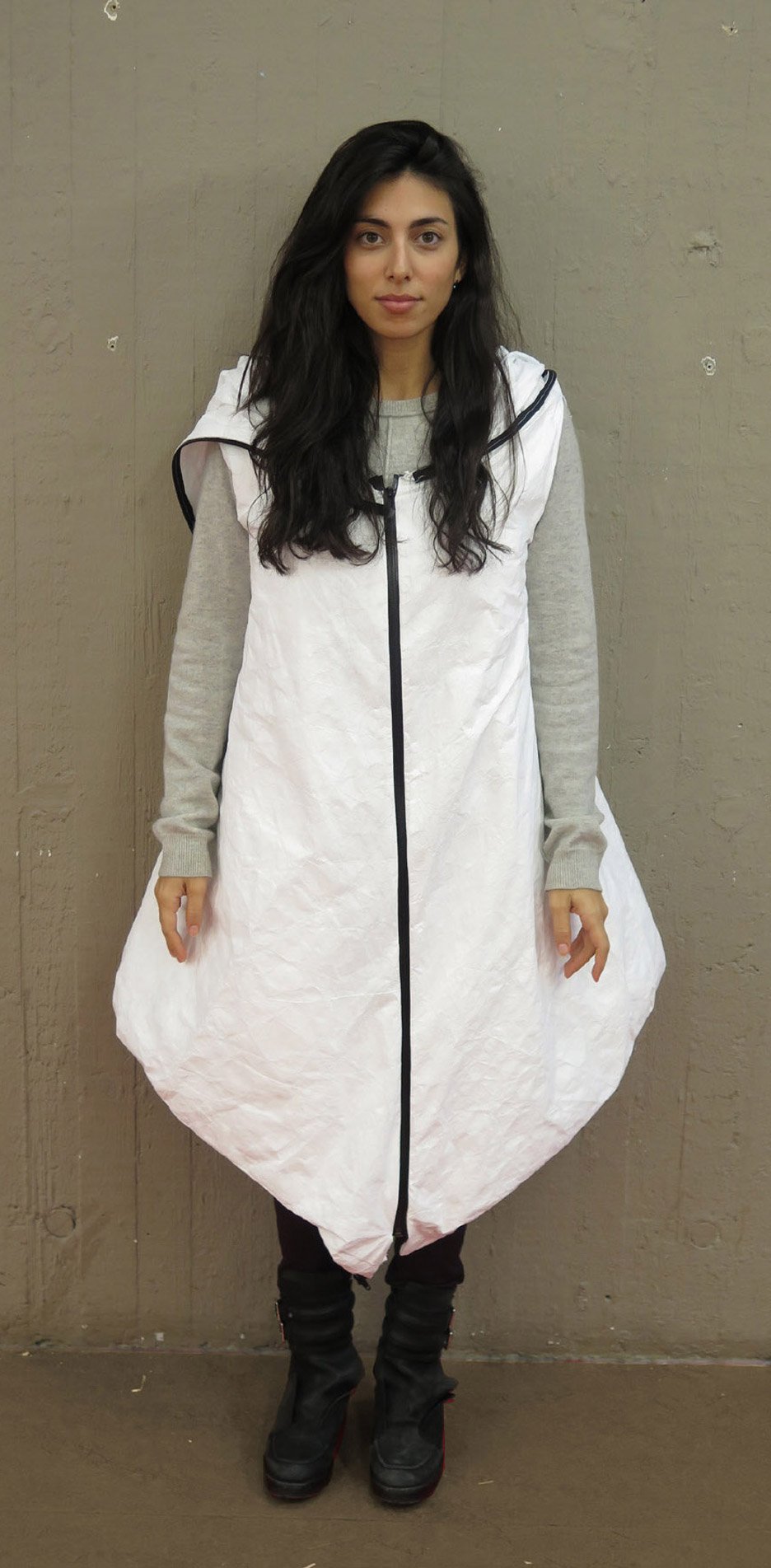
Black zips allow the coat to be completely opened out and transformed into a sleeping bag. Lightweight kite-rods can then be fed through specific seams to form a tent. Visual assembly instructions will be printed onto each garment.
"We spoke with Médecins Sans Frontières to get an idea of what a refugee's journey truly was," said Harriet Harris, one of the project leaders. "Our garment has three stages of use: one as a piece of clothing, one as a sleeping bag and one as a tent."
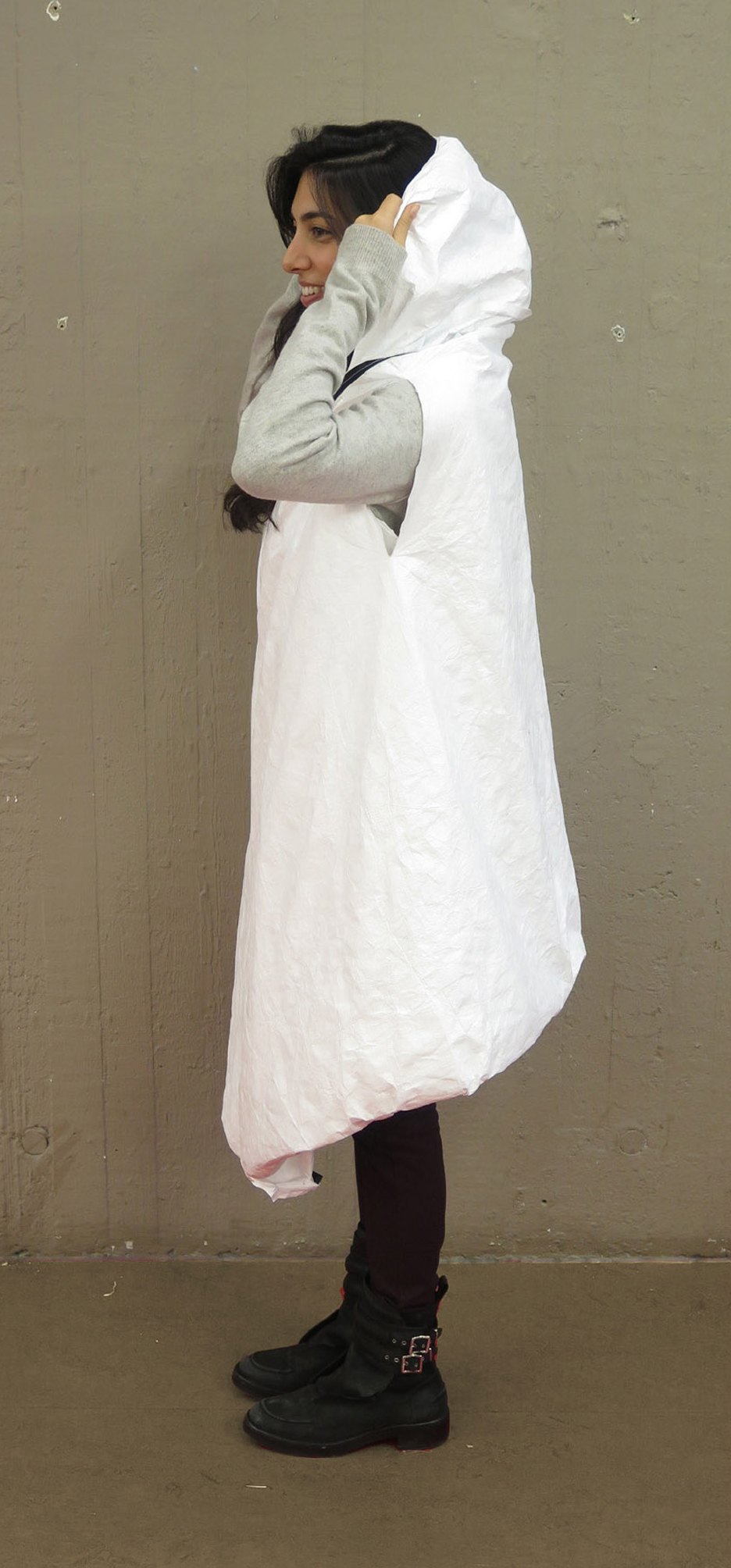
"These three aspects adapt to the conditions a refugee would experience through their two- to five-week journey," she told Dezeen.
The coat was developed by mixed teams of students from the RCA's interior design and textile courses, who were asked to develop wearable shelters for those displaced by conflict in their home countries.
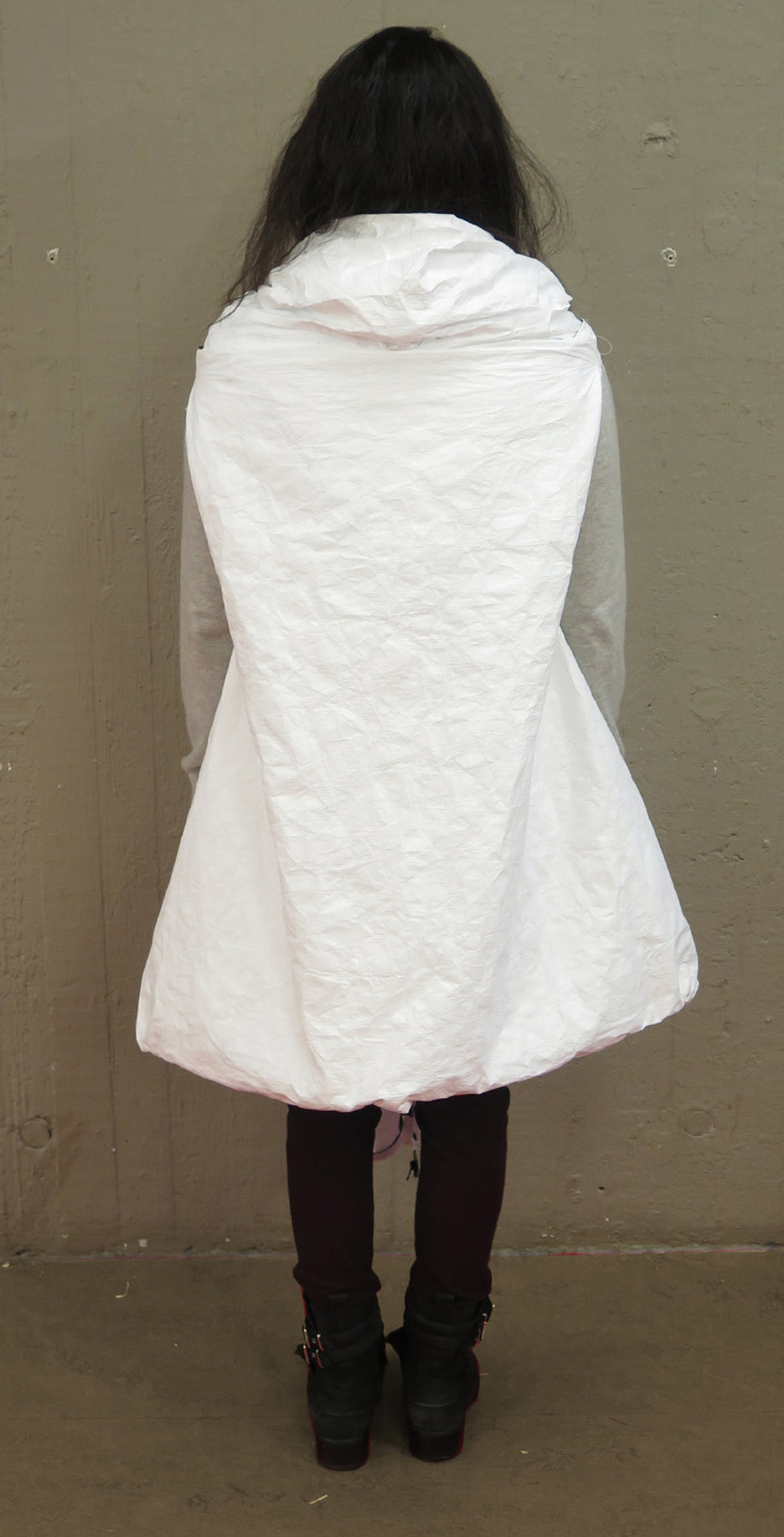
The brief for the Wearable Habitation project – set by professors Harris and Graeme Brooker – stated that the coats had to be able to reconfigure into a small dwelling or tent-like structure with enough room to accommodate two to four people. Material used needed to be both cost effective and sustainable where possible.
"The original design project was run as a team-based, one-week 'hackathon' – we wanted imaginative ideas as our starting point," said Harris. "We then merged three of the strongest design proposals into one coherent proposal that is now with the factory for prototyping."
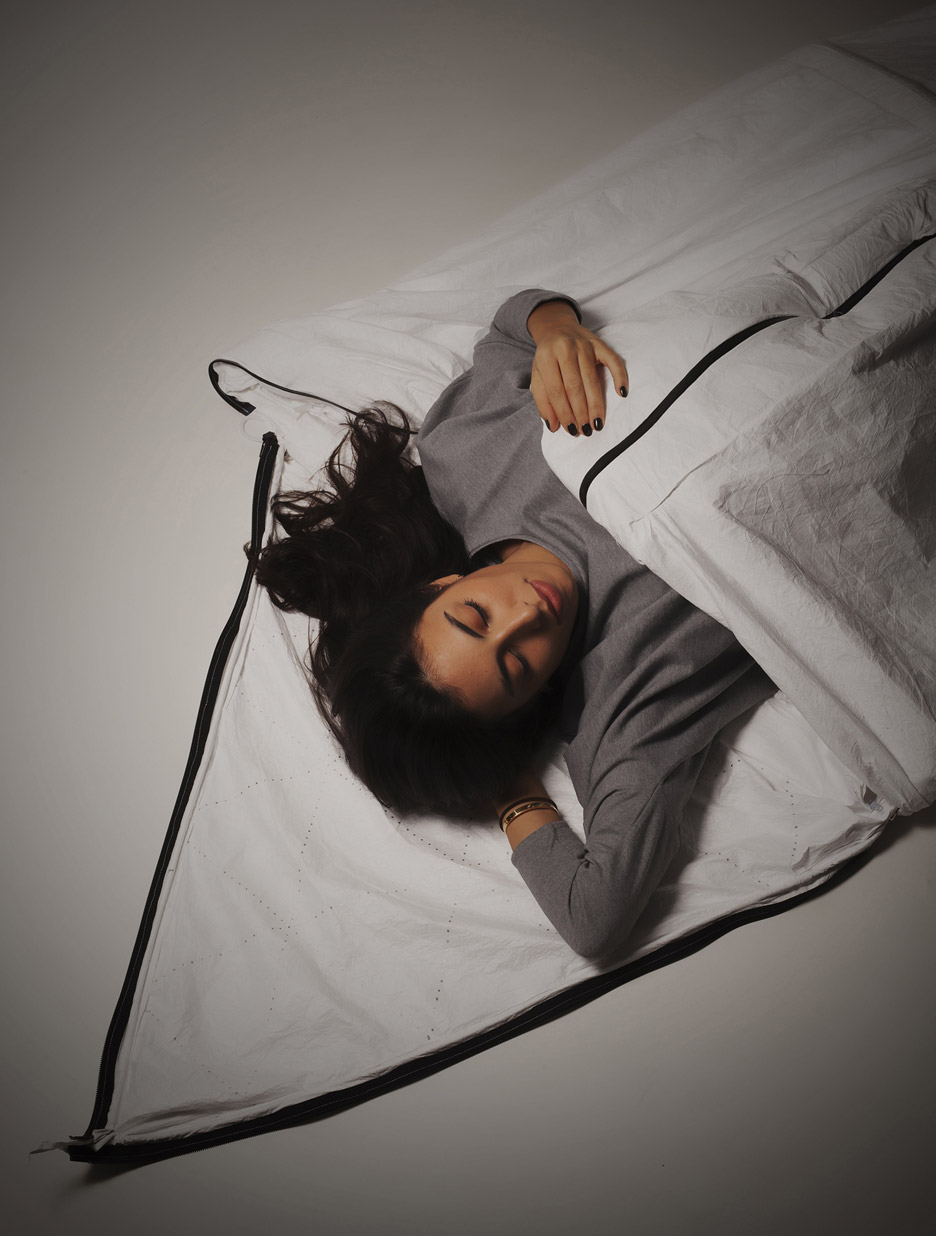
A Kickstarter campaign to fund the first batch of coats aims to raise £300,000 by the end of February, after which point the team believes it can become self-sufficient.
"Once we have the prototypes back from the factory in China we will engage with refugees and conduct site visits, plus rigorous testing to further improve the garment," Harris said. "The completed testing and prototyping of this version will inform designs for a winter version and a child version."
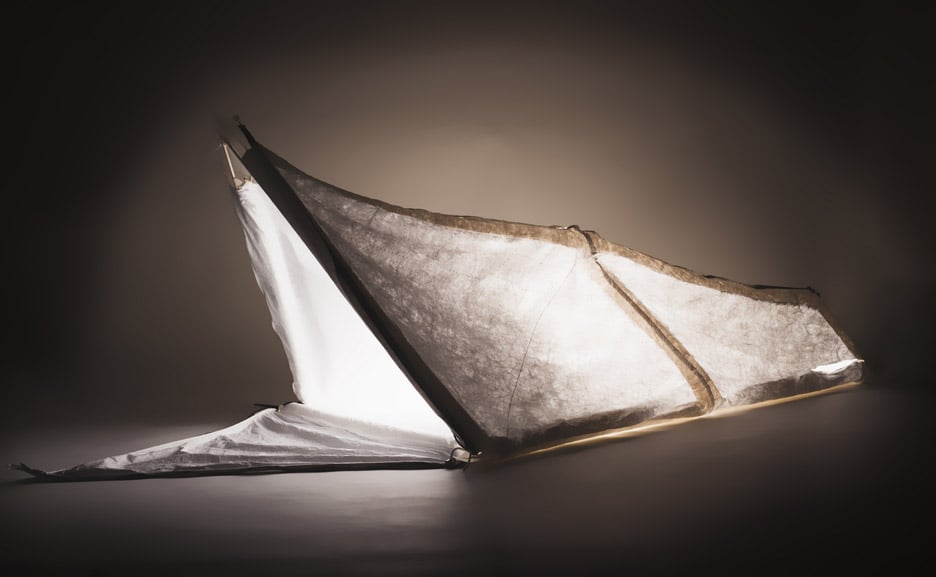
In response to Europe's ongoing refugee crisis, disaster relief and humanitarian projects formed one of the biggest design and architecture topics of 2015.
Last year, artist Banksy sent materials from his dismantled Dismaland theme park to the Jungle refugee camp near Calais, where it will be used to construct shelters for some of the region's 7,000 refugees.
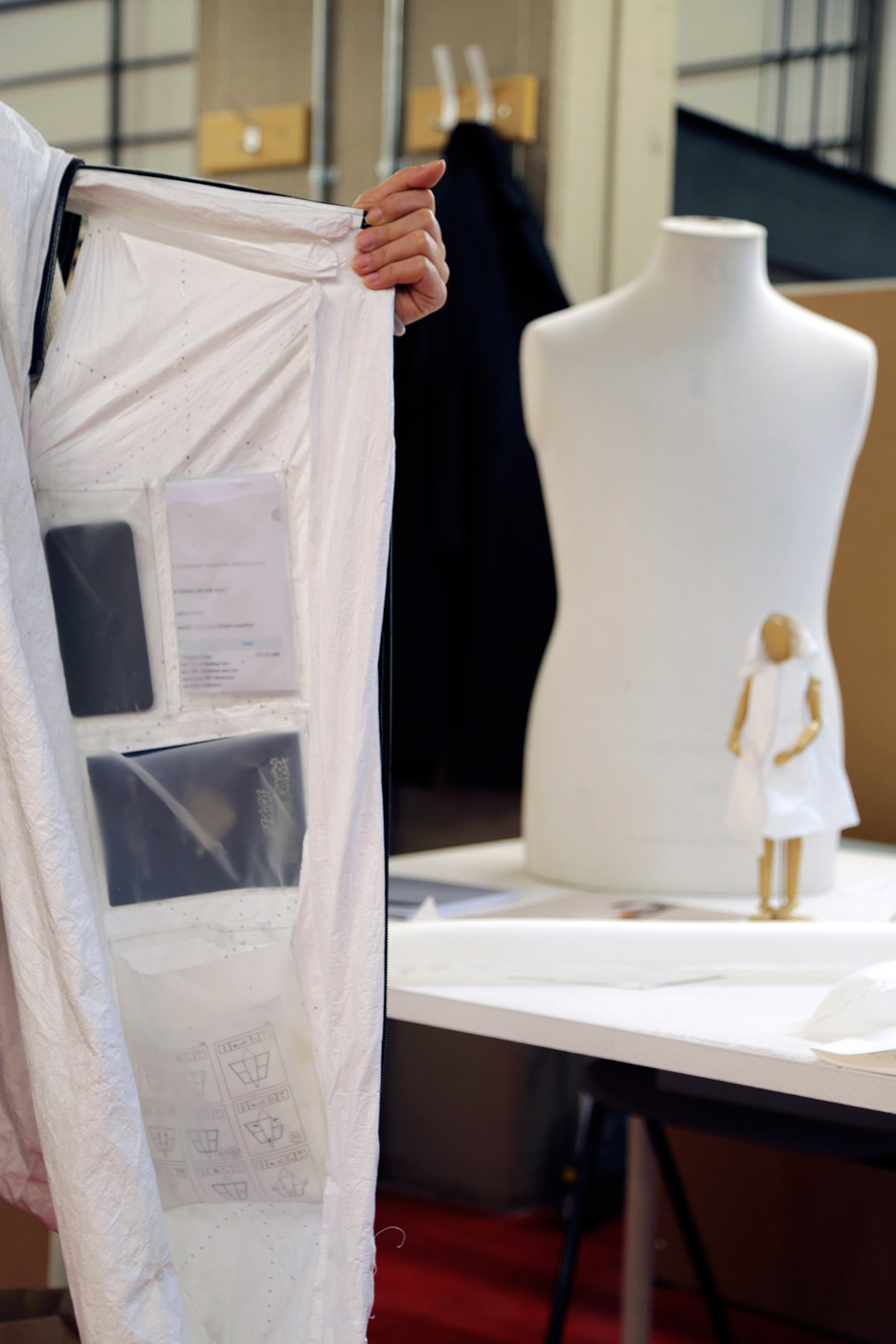
Currently, Scottish design agency Suisse is raising funds to develop its RD-Shelter prototype, which could be rapidly deployed to house people displaced by war or natural disasters.
"Good design isn't about technologies and devices – it has a social heart and a role to play in meeting the needs of people facing impossible challenges," said Harris. "Right now, working solutions to the current crisis are limited and the suffering doesn't seem to stop."
"Whilst our wearable won't solve the whole problem it addresses a small part of it," she added.
Photography is by Joshua Tarn.
Project credits:
Design team: Gabriella Geagea Anne, Sophie Geay, Cassie Buckhart, Eve Hoffman, Anna Duthie, Jess Wang, Hailey Darling, Zara Ashby, Ruben Van Bossche and Guilia Silovy.